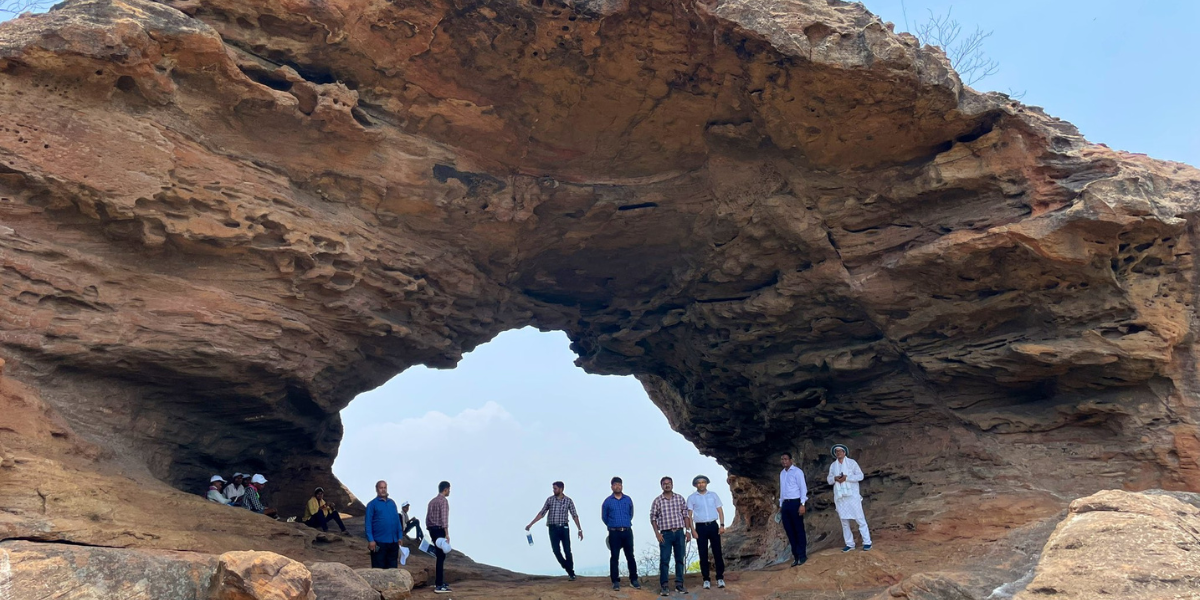Natural arch in India-India’s biggest natural arch formed 184 million years ago

Natural arch in India: As per the GSI scientists the formation dates back to about 184 to 160 million years in the lower to middle Jurassic age.
The GSI team, considering the scientific and academic significance and its aesthetic value has stressed that “efforts may be undertaken to preserve this place as a national geo-heritage site.”
Located within the dense Chhengapahar Reserve Forest near Brahmani village, the natural arch is surrounded by cliffs and steep sloped hills. In his report Saptarshi Mallick, a geologist with GSI sharing details of the formation has said: “The natural arch has a maximum length of 30 metres at the base and maximum height of 12 metres. The alcove of the natural arch, has maximum height and width of 7m and 15m respectively and geometrically the arch is oval shaped.”
Interestingly the arch has an ancient cultural and mythological connection. Talking about this aspect with India Narrative, Lalit Kumar Patra, Divisional Forest Officer Bonai who is also in charge of Sundargarh Forest Division where the natural arch is located said: “The hill is named after this natural arch which has a hole. Chhenga in local language means ‘hole’, so the name Chhengapahar or Chhenga Hill. Apart from this, according to legend, it is said that when Lord Rama was hunting for the ‘mrigaya’ or the golden deer, the arrow he shot at the animal made a hole in the rock and landed on the other side of the hill.”
Brahmani “Natural Arch” Near Hemgir,Sundargarh,Odisha has been declared as #Geoheritagesite of India by #GSI(Geological Survey of India)#GeologicalHeritage#NaturalHistory #AzadiKaAmritMahotsav @susantananda3 @NatGeo @GeologyIndia @odisha_tourism pic.twitter.com/P1KTdkMMqL
— Lalit Patra IFS (@Lalit_ifs) June 7, 2023
The “Report on the Natural Arch….” by Mallick, a copy of which has been accessed by IN states that the physical characteristics of the rocks shows that the hill is “coarse to gritty sized, flesh red coloured, poorly sorted, immature, ferruginous sandstone of Kamthi Formation of Upper Gondwana Group.”
Credit: IndiaNarrative